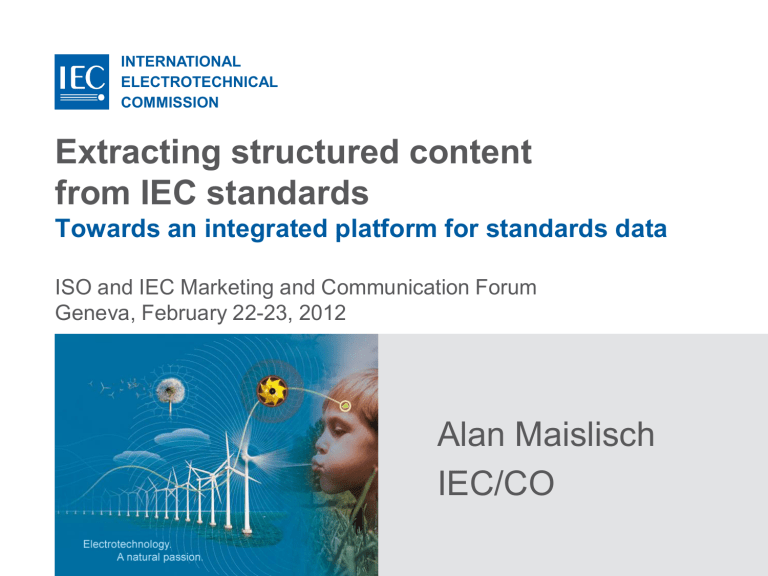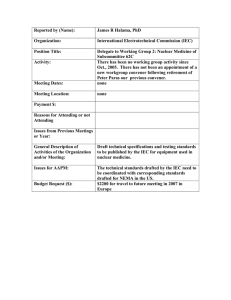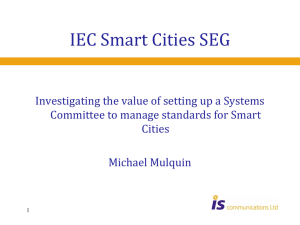Extracting structured content from IEC standards (Normative

INTERNATIONAL
ELECTROTECHNICAL
COMMISSION
Extracting structured content from IEC standards
Towards an integrated platform for standards data
ISO and IEC Marketing and Communication Forum
Geneva, February 22-23, 2012
Alan Maislisch
IEC/CO
What is structured content?
Definition:
Information that is written in reusable blocks or components
Examples in standards:
Normative references
Terms and definitions
Scope
Table of contents
Tables
Figures
2
Benefits of using structured content
Reuse components in different contexts
Enrich standards metadata to facilitate search
Identify related information
3
Objectives of pilot project
Extract structured content using a simple, low-cost method
Provide an integrated framework for all standards-related information
4
Methodology
Transform PDF documents into text files
(including scanned image files)
Parse files using custom program based on regular expressions (patterns of strings)
Extract identified text segments
Load into database
5
Example: Normative references
Identify section “Normative references” in document
Look at beginning of line for header (e.g. IEC, CISPR, ISO) followed by numeric reference
6
Normative references: inverse relationship
For a given standard, which other standards use it as a normative reference
Provides an indication of the relevance of a standard and its use by other TC/SCs
Promotes dialogue and cooperation between TC/SCs and a systems approach
7
Other examples for automatic extraction
8
Centralized platform for standards data
Bring together all relevant information under a single integrated interface
Normative references
9
Standards data (cont.)
Referenced by
10
Standards data (cont.)
Terms and definitions
11
Standards data (cont.)
National adoptions
12
Conclusion
There exist simple and cost-effective ways to extract structured information from IEC standards (1 week effort to develop utility)
Providing standards data under a comprehensive, integrated framework will make it easier for end users to find and apply relevant standards
13
INTERNATIONAL
ELECTROTECHNICAL
COMMISSION




